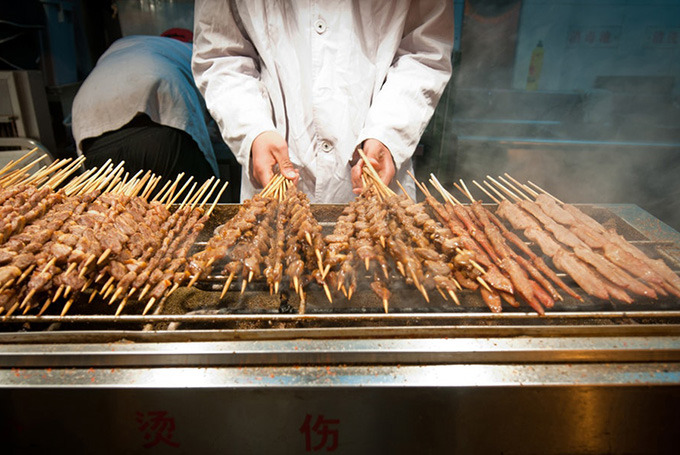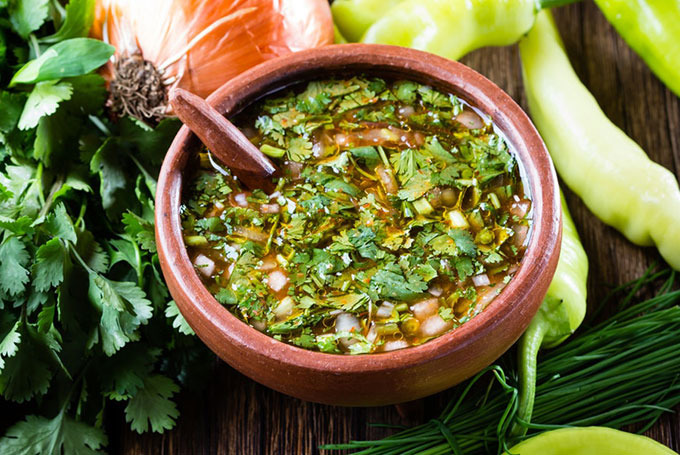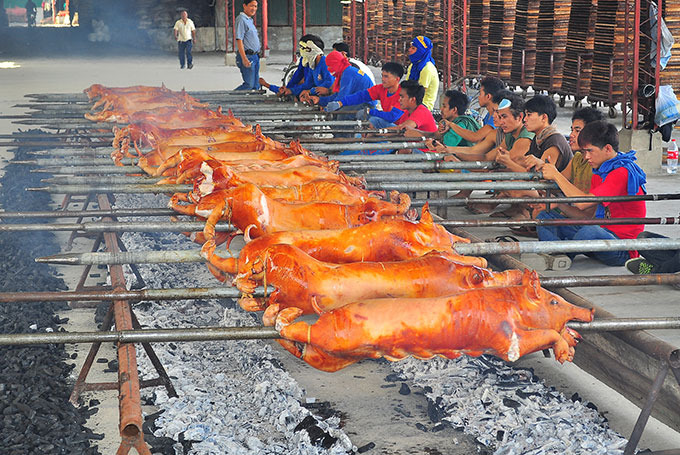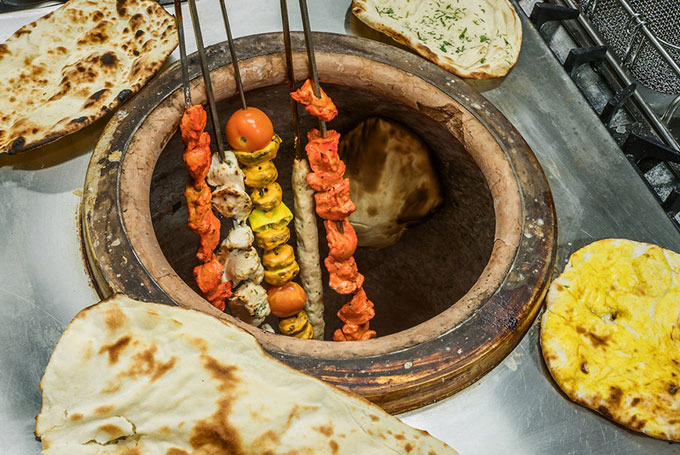Types Of BBQ Around The World
It only takes a heap of wood or charcoal, and perhaps a metal pan or a pit dug into the soil. Barbecue is within the reach of practically everyone on earth—nomadic wanderer or cosmopolitan city-dweller—because unlike other methods of cooking meat, it doesn't rely on an expensive grill or high-heat stove. With all the attention piled upon Carolina, Texas and Kansas City barbecue, and their beloved international counterparts, Jamaican jerk and Argentinian asado, it's easy to forget that this is a truly global dish. Countries around the world have their own distinct styles of barbecue, each shaped by the meats and ingredients local people could obtain; some of these methods are older than the United States itself. These eight dishes are too often overlooked—and more than worth seeking out.
Barbacoa
Mexico
If you've ever wondered where we got the word "barbecue," you can thank the Spanish. Barbacoa was the name they gave to the cooking style popular with the Taíno, a people indigenous to the Caribbean. (Their culinary influence is also apparent in Jamaica and other countries across the region.) At its most orthodox, barbacoa is a whole sheep slow-cooked over an open fire pit. Sheep and pit are covered with maguey leaves, which release steam as they cook, giving the meat a flavor reminiscent of tequila (which is distilled from maguey, an agave plant). Whether made from sheep in Central Mexico, pork in the Yucatán Peninsula, or goat and beef head in northern Mexico, barbacoa is a rich, fatty dish. Don't pass up the restaurant Barbacoa Renatos when you're in Mexico City.
Chuan'r
China
Created by the Muslim Uyghurs in West China's Xinjiang region, chuan'r has its roots in a regional lamb dish and has grown into a popular technique that is applied to meats of every kind, seafood and even insects. The skewered protein is cooked on a metal pan on a raised surface, which is filled with smoldering coals and topped with a wire rack. Now a staple street food from Ürümqi to Hong Kong, you can find authentic chuan'r in practically every major Chinese city, but if you want a seat with your meal in Beijing, try the restaurant Guomao Kaochi.
Photo: Fotokon/Shutterstock
Khorkhog
Mongolia
Because of its ultra-portable cooking method, khorkhog is the meal of countryside nomads. Lamb or goat is chunked into bone-in pieces and layered over fire-warmed stones inside a large metal milk jug. Rather than heat the jug over fire, the cook pours water into it, which the stones turn to steam. With the lid on, the hot stones and steam cook the meat into something like a dry stew, which is eaten with one's hands. This authentic, made-in-Mongolia barbecue is not easy to find in restaurants in and beyond the rugged nation. The dish known as "Mongolian barbecue" is actually a Taiwanese invention from the 1950s. One of the few restaurants that does serve khorkhog is Modern Nomads 2 in the capital, Ulaanbaatar. You can also try it in the countryside if you're lucky enough to befriend a local.
Asado con Pebre
Chile
It's not the method or the meat that sets Chilean asado apart. It's the jungle-green sauce, pebre. The spicy Chilean staple, made with diced onion, olive oil, tomatoes, garlic, cilantro and aji peppers, is piled high on rib-eye steaks, baby-back ribs and skewers of assorted meats. Culinary tradition holds that pebre descends from a Catalan sauce that Spanish engineers and masons brought to 18th-century Chile. If you find yourself in Santiago, try it at Bocanáriz.
Photo: Larisa Blinova/Shutterstock
Lechón
Philippines
Lechón is so good, it's been the Philippines' national dish for 130 years. Preparation varies by region, but generally the dish consists of a whole pig roasted rotisserie-style over a charcoal pit. Often, the pig is rubbed with coconut water, milk, or soy sauce and stuffed with salt, lemongrass, batuan fruit, leeks, and garlic. Lechón takes all afternoon to cook; the reward is the unique sensation of biting through thick and crispy brick-red skin. The best lechón, served at Car-Car's Best Lechon in Cebu City, needs no sauce.
Photo: whologwhy/Flickr
Tandoori
India
The Punjabi tandoor, a bell-shaped clay oven in which a fire is built, hasn't changed in 5,000 years. To make the eponymous dish, the cook layers wood or charcoal on the floor of the pot, lights it and adds the meat directly on top of the fire. Flames and swirling hot air cook the meat, and fat dripping on the coals smokes it, too. Because tandoori cooking was popularized by Muslims, it typically features chicken, although you can use a tandoor to cook any kind of meat or seafood. Moti Mahal, one of New Delhi's oldest restaurants, has been serving tandoori since 1947.
Photo: Ahastudio/Shutterstock
Braai
South Africa
Short for braaivleis, of Afrikaans creation, the braai is South Africa's cherished version of the backyard barbecue. Any occasion, no matter how formal, is good cause to break out the wood lumps or charcoal. Any meat can be braai-ed: sausages, kebabs, chicken, pork chops, lamb, steaks, fish, lobster or ribs. It's the dry rub—typically combining paprika, nutmeg, coriander, cayenne, cumin, allspice, black pepper, garlic powder and cloves—that unites it into one South African style. Give it a try at The Backyard Grill if you pass through Cape Town.
RELATED Australia's Biggest Chef Invited Me to a BBQ, and Here's What Happened "
Hima'a
Tahiti
Hima'a is just as much a community event as it is a cooking style. The big undertaking requires many hands working all at once to dig soil, collect leaves, wrap food and tend a smoldering fire all afternoon. Green hibiscus leaves, coconut fronds or any nearby greenery are layered over dry wood and porous volcanic rocks inside a pit as big as a full-size mattress; moisture in the leaves turns to steam to help cook the pork and, depending on the type of leaves, flavor it. The pork is wrapped in more leaves and placed on top of the pit, and then burlap sacks, plastic tarps or plain old dirt is piled over it all to seal in the heat. After cooking all afternoon, the pork is dug up and glazed in savory sauce and served with tropical fruits. You won't find this in a restaurant—go make friends and get yourself invited to a hima'a instead.
This story was originally published on AFAR.




